Author Miriam Beard, daughter of the American historians Charles A. and Mary R. Beard said, “Travel is more than the seeing of sights; it is a change that goes on, deep and permanent, in the ideas of living.”
The longer I travel, the more I realize the truth of this statement. Prior to visiting Paris for the first time, I associated it with the Eiffel Tower and Louvre Museum. After three visits, the City of Light evoked the yeasty aroma of fresh-baked bread from the boulangerie and sipping espresso at sidewalk cafes. Mexico once meant the artificially created tourist island of Cancun. Four and a half months of wandering around the country made Mexico synonymous with its Pueblos Mágicos (Magic Towns), where families emerge from their houses in the cool of the evening to share the gossip and exchange news. Everywhere I go, a shift happens deep within me as I immerse in the local culture.
Russia was no different. I expected and saw broad boulevards choked with traffic, and immense stark buildings. I visited Red Square and the Kremlin in Moscow, as well as the Hermitage Museum in St. Petersburg. But by the end of my journey, more than any of the iconic tourist sights, the essence of Russia was defined by its exquisite churches.
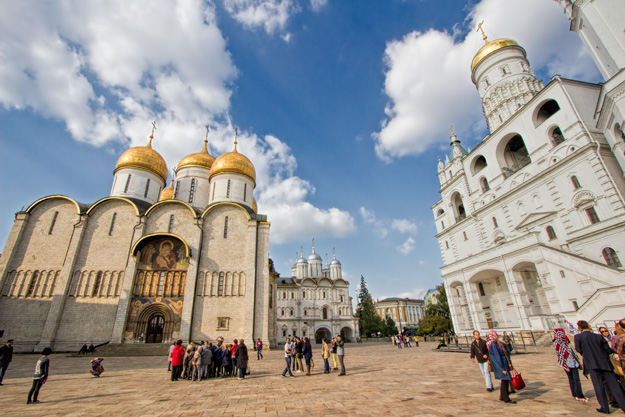
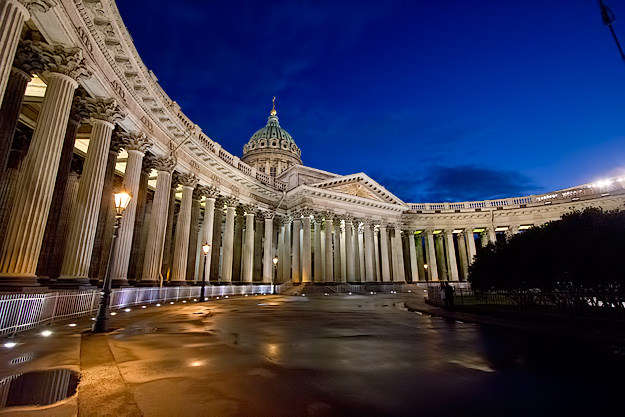
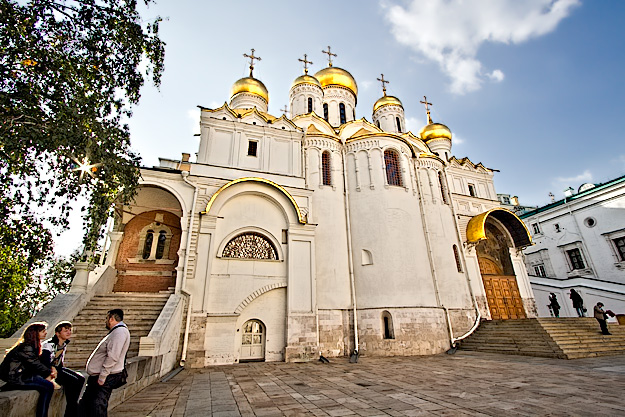

In the 9th century, Greek missionaries from Byzantium introduced Christianity to Slavic tribes in Kievan Rus, an area corresponding to present day Ukraine, Belarus, and Russia, from which Russians trace their cultural ancestry. Christianity gained a stronger foothold in Russian Kiev when Princess Olga converted in the mid-10th century, but it was not until her grandson, Vladimir I, was baptized under the Byzantine rite in 988 that the Russian Orthodox Church became the official state religion. Throughout history, the church has been instrumental in the survival of Russian people. It enjoyed favored status during more than two centuries under Mongol rule and subsequently helped the country to withstand years of Tatar oppression in the 15th century.
Russian Orthodox Churches in Russia differed from their single-cupola Byzantine predecessors. St. Sophia Cathedral in Novgorod, one of the first churches in Russian Kiev, was topped by 13 wooden domes. The 17th century 22-dome Transfiguration Church and the 9-dome Intercession Church and bell-tower on Kizhi Island in Lake Onega were built entirely of wood and still stand today as examples of the most exquisite churches to be seen throughout the land .

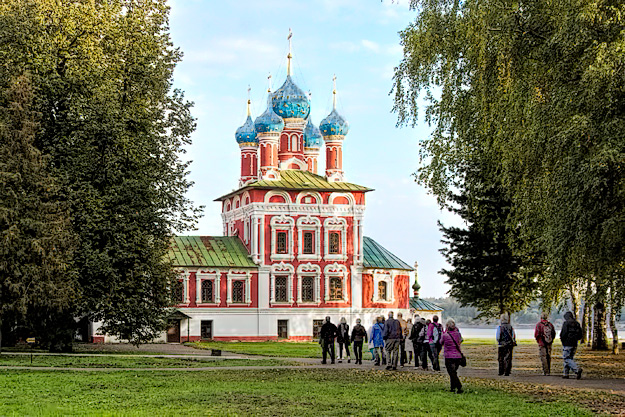
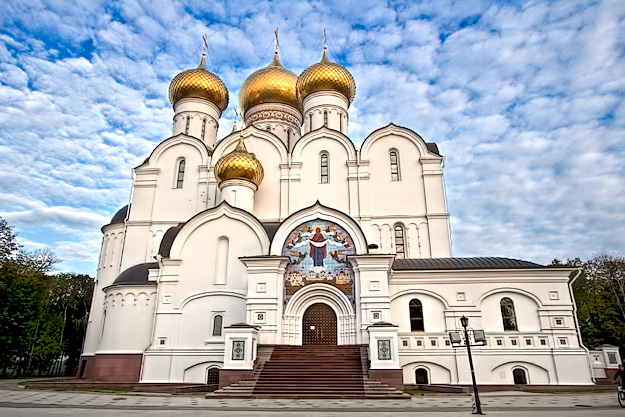
Late in the 12th century, tower churches began to appear. This design featured a tall vertical main structure, topped by pointed gables or curved corbel arches known as kokoshniki, upon which sits a domed, cylindrical tower. Kokoshniki could be spade-shaped, semicircular, or pointed and were so profusely used in Moscow that churches sported a distinct pyramidal shape.
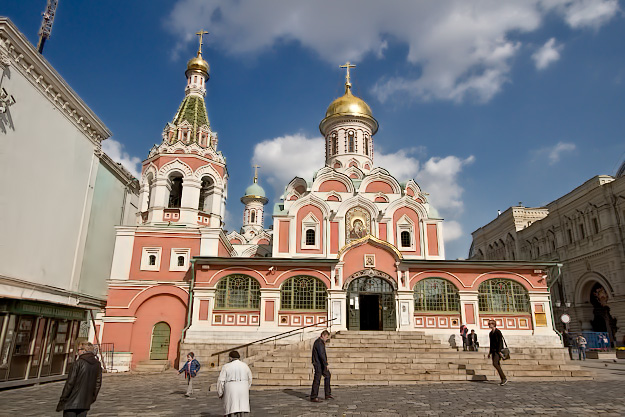
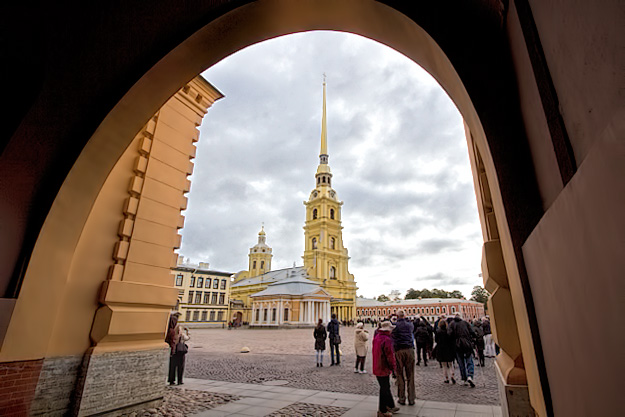
In the 16th century, Ivan the Terrible introduced churches with a multitude of chapels capped by tent-like roofs, like the iconic St. Basil’s Cathedral in Moscow’s Red Square, perhaps the best-known example.
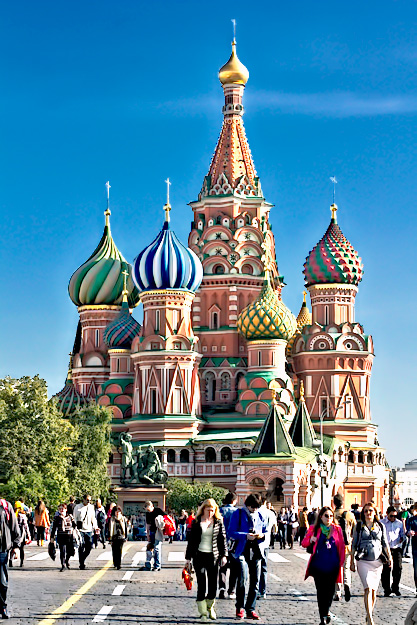
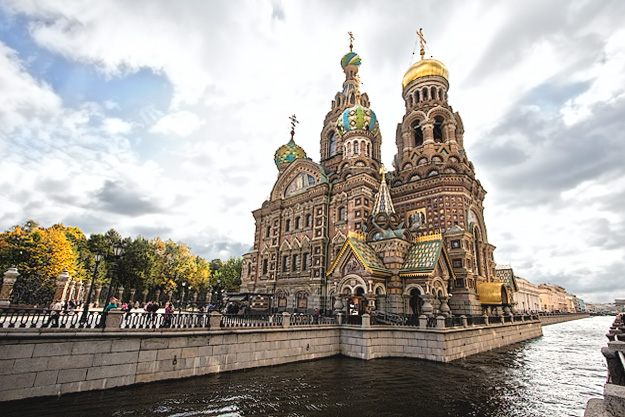
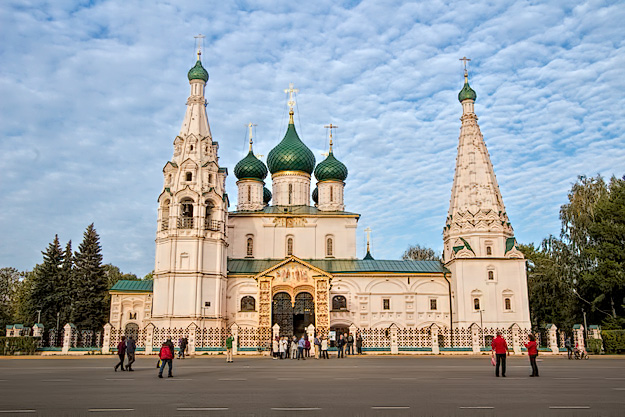
Other designs included churches with belfry towers; gabled churches with a single, massive dome; and Rotunda Churches, which feature a circular, semicircular or elliptical floor plan.

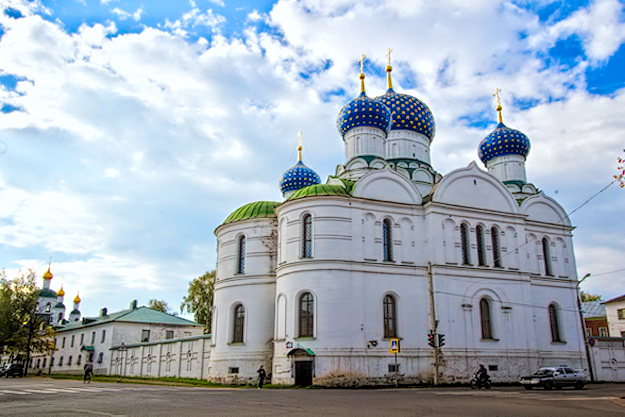
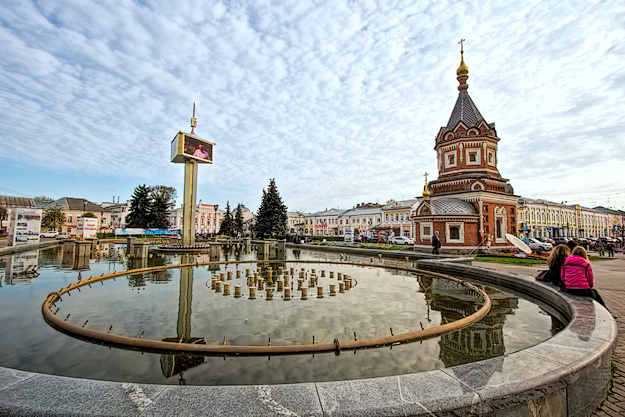
If the exterior of Russia’s churches are dazzling, the interiors are sublime. Unlike Christian churches in the Western world, where worshipers sit in rows of pews during services, the nave of a Russian Orthodox Church is a vast open space where parishioners stand for services that last for up to two hours. Everything in the church is designed to enhance the mystical experience of worshipers. Prince Vladimir of Kiev, who attended his first Orthodox service in the year 1000 in Constantinople recorded that, “We knew not whether we were in heaven or on earth, for on earth there is no such splendor or such beauty, and we are at a loss to describe it. We know only that God dwells there among men.” Walls of the nave are adorned with paintings and intricate mosaic scenes, chandeliers hang from ceilings, and pillars are faced in marble. Incense smoke slowly curls up to the apex, dancing in sunbeams that filter through high windows. At the front of the nave, gilded icons of patron saints stand on pedestals, awaiting a kiss of veneration from each worshiper.
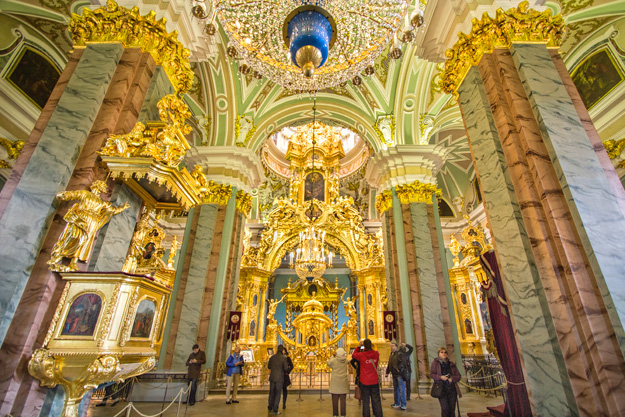
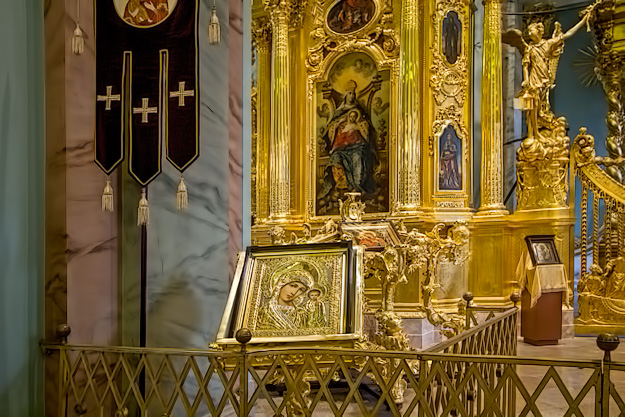
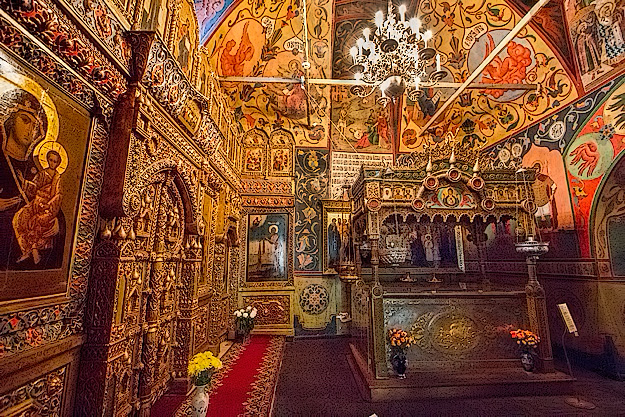
Separated from the nave by a railing and one or more steps is the iconostasis, a floor-to-ceiling five-tiered panel of religious art that stands as a symbolic link between the terrestrial realm (the nave) and the heavenly realm (the sanctuary). From bottom to top, the rows of paintings show: 1) Christ and the Virgin Mary, along with scenes depicting the patron saints of each particular church; 2) archangels and saints; 3) the twelve great feasts of the liturgical calendar; 4) Old Testament prophets and patriarchs; and 5) the twelve Apostles. Beyond the iconostasis, accessed by one or more doors carved into the panel, is the sanctuary, which contains the altar table and consecrated Eucharist, hidden from view by all but the clergy.
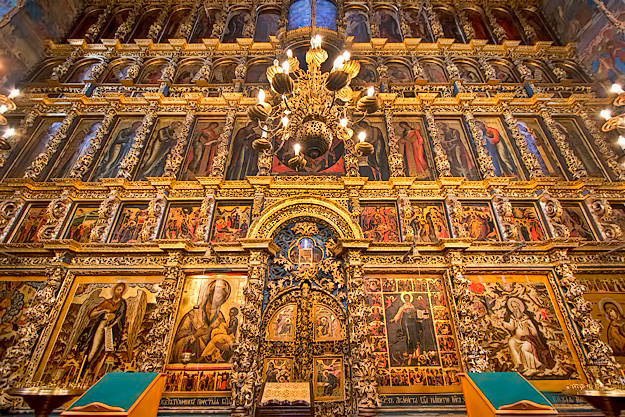
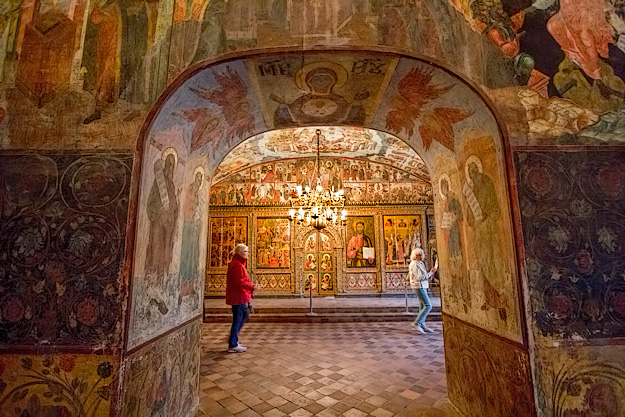

I was fortunate to visit several of these Russian churches while services were underway. In Moscow’s Cathedral of Christ the Savior I stood beneath its 338-foot high dome as stooped babushkas, mothers with baby carriages, and smart-suited businessman stood shoulder-to-shoulder with bowed heads, chanting the liturgy from memory. Priests in ornate vestments prepared the Eucharist as the choir broke into song that reverberated throughout the cathedral. Incense dropped on hot coals in censers infused the air with a musky aroma. The reverent atmosphere wrapped me in a cloak of serenity until I recalled that the current Cathedral of Christ the Savior stands on the site of a 19th century church of the same name, which was demolished in 1931 on the orders of Joseph Stalin.

Communism’s official stance on religion was one of tolerance, however the state established atheism as the only scientific truth. During the Soviet era, thousands of churches and monasteries were destroyed or converted to alternate uses, religion was ridiculed, and atheism was espoused in the curriculum of schools. Thousands of Orthodox clergy were arrested and sent to prison camps, where they were subject to mind control experiments in order to force them give up their religious convictions, or even worse, killed. The Komsomol youth organization was encouraged to vandalize churches and harass worshipers. Those participating in religious activities were blacklisted from membership in the Communist party and deemed ineligible for better employment opportunities. By 1939, only a few hundred churches remained open across Russia.
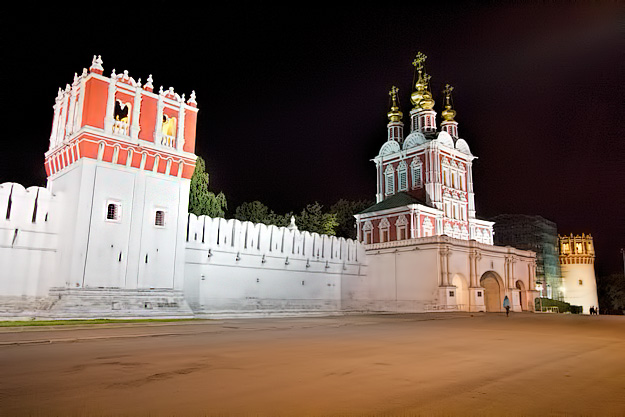
Joseph Stalin revived the Russian Orthodox Church to encourage patriotic support for the war after Nazi Germany’s attack on the Soviet Union in 1941. The number of churches had grown to nearly 22,000 when Nikita Khrushchev was named head of the Communist Party of the Soviet Union in 1953. Khrushchev mounted his own anti-religion campaign, once again closing 12,000 churches and executing more than 50,000 clergy. The dark days finally ended under the rule of Mikhail Gorbachev, who arranged for government-supported celebrations of the 1000-year anniversary of the Kievan Rus church to be staged across the country in 1988.

Today the Russian Orthodox Church is enjoying a tremendous resurgence. Church attendance has continued to climb since the dissolution of the Soviet Union and many younger people, who were married in civil ceremonies under Soviet rule, are arranging to be remarried in the church. Even Vladimir Putin, the current President of Russia, regularly confers with the Patriarch of the Church on religious holidays. Standing in the center of the new Cathedral of Christ the Savior, I was overwhelmed by the perseverance of the Russian people, who refused to give up their religious beliefs in the face of such extreme oppression. More than any other institution, Russia’s churches symbolize the indomitable spirit of the Russian people.
Note: I was a guest of Viking River Cruises during my Waterway of the Tsars cruise. However, the receipt and acceptance of complimentary items or services will never influence the content, topics, or posts in this blog. I write the truth, the whole truth, and nothing but the truth.

Hi Barbara,
I too had picked up the travel and photography bugs since I was born. So as I read about you, your life-story inspired me. I too have lived long doing things that I just had to do -from obeying my dad as the eldest son of the family, studying law, to doing jobs that never give me any joy– mostly if not always. Then my mum was diagones to have Alzheimer’s. And so I took care of her for many years till she was taken home by Jesus.
A friend recently visited Russia. And I happened to see the air tickets to Russia are cheaper and the exchange rate favourable so I started Googling Russia. And that brouht me to your blog. I am so happy that I am here.
I was checking the trans-siberian express. Have do had any chance of travelling in it?
And a last question, have yu ever visited and written on my country India. Its really wonderful you know.
One more praise, its so nice that you actually take the time to read and reply to every comment. Btw, i have subscribed to your blog.
Hi Santanu: Thanks so much for letting me know how you found my blog. I’m always curious about the path readers take to find me. And I truly appreciate you subscribing. Unfortunately, I’ve not done the Trans-Siberian express; it’s definitely on my wish list. But I have been to India three times. I’ve written about my most recent Indian journey, and you can find those stories at https://holeinthedonut.com/tag/india/
My high school composition class is read “God’s Smuggler” and we are discussing the status and beauty of the Russian churches throughout history, particularly during The Cold War. Thank you so much for your pictures and information. My students are going to know who you are:)
Thank you SO MUCH, Joy. I love what I do, but struggle to make enough money, so comments like these make it all worthwhile.
Wow…! you have a lot of stunning photos. I really love your pictures of the churches in Russia. how I wish to come to the place. Thank you for your photos.
Such beautiful pictures and narrative bring back memories of a trip to St. Petersburg in 2013. We were fortunate to have the consultation and guidance of Yulia, a native St. Petersburger and the creator of gladtomeetyou.com. She knows the city from the inside out!
Thank you, Barbara, for sharing your memories and knowledge.
You’re so welcome, Beth. My next article will be about St. Petersburg. I found it a difficult city to warm up to, but it certainly is a beautiful place.
Wow! This story and photos brought back so many wonderful memories! We went to all but one of the churches mentioned and would agree that the churches of Russia are indeed its soul. The whole Russian experience was very enlightening and gave us an entirely new perspective on the country and people we would have never been able to experience any other way than actually being there. Thank you!
Thanks so much for your comment, Ron. I also felt strongly that the churches provided a glimpse into Russian culture that was not visible elsewhere.
I’ve been in some of these churches. Wonderful to see the pictures. Even nicer when there is choral singing.
Hi Arlene: The churches were incredible, but I agree -the choral singing, done in a church with such perfect acoustics, raised goose pimples on my arms.
Amazing article and great photographs. Loved it.
Thank you so much Rana. Glad you enjoyed it.
Very beautiful sitesm i hope one day i can visit theses churches in russia thanks for your article
I hope you have the chance to visit them as well. Minh. Thanks for your comment.
Gorgeous churches. Thanks for bringing out this side of Russia. I mean I don’t really know about it. Your photos and info inspire me to put Russia on my bucket-list. Incredible architectural beauty!
Hi Renuka: You’re very welcome. Russia’s churches were just breathtaking.